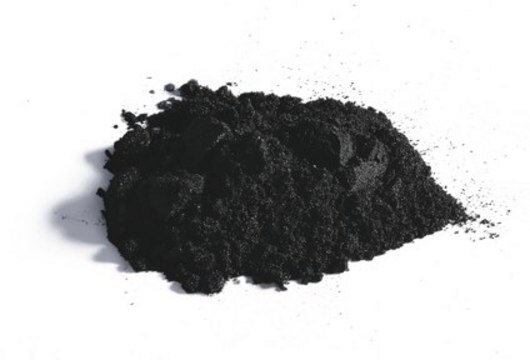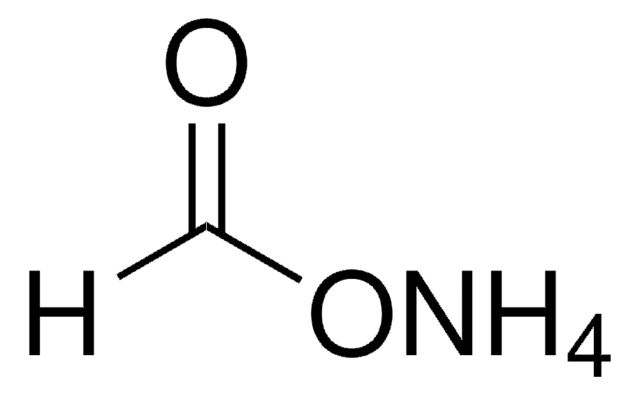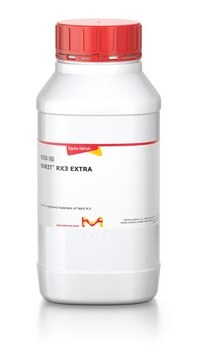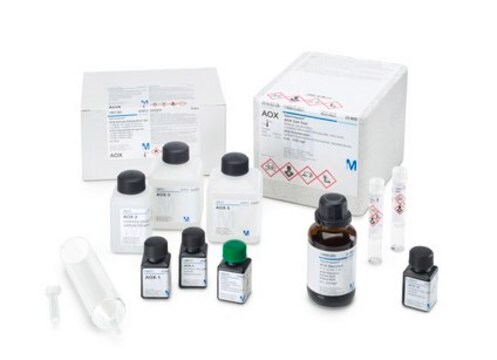1.02005
Charcoal activated
for the determination of AOX (shaking method)
Synonim(y):
Charcoal activated
Zaloguj sięWyświetlanie cen organizacyjnych i kontraktowych
About This Item
Wzór empiryczny (zapis Hilla):
C
Numer CAS:
Masa cząsteczkowa:
12.01
Kod UNSPSC:
11101522
Numer indeksu EC:
231-153-3
NACRES:
SE.11
Polecane produkty
Poziom jakości
Formularz
solid
metody
photometry: suitable
mp
3550 °C
gęstość nasypowa
150‑440 kg/m3
temp. przechowywania
2-30°C
InChI
1S/C
Klucz InChI
OKTJSMMVPCPJKN-UHFFFAOYSA-N
Zastosowanie
- Adsorptive Removal of Dyes and Contaminants: Activated charcoal is extensively used for the adsorption and removal of dyes and other contaminants from aqueous solutions. Recent research highlights the use of activated charcoal modified with BaFe12O19 powder for the efficient removal of methyl blue dye. This magnetic adsorbent can be easily retrieved and reused, making it a sustainable option for water purification (Polley and Bera, International Journal of Environmental Analytical Chemistry, 2023).
- Heavy Metal Detection and Removal: Activated charcoal is utilized in composite materials for detecting and removing heavy metals from water. A notable study developed a Ni-sensor based on activated charcoal plastic membranes, showcasing the material′s effectiveness in analytical applications for environmental monitoring and pollution control (Zareh et al., Journal of Analytical Chemistry, 2022).
- Filter Composites for Industrial Wastewater Treatment: Activated charcoal combined with banana rachis cellulose nanocrystals has been used to create filter composites for industrial wastewater treatment. These composites effectively remove dyes and heavy metals, demonstrating their potential for large-scale environmental applications and enhancing water quality (Rahman et al., International Journal of Environmental Analytical Chemistry, 2022).
- Dental Applications: In dental research, activated charcoal combined with calcium hydroxide has been evaluated for its effect on dentin microhardness. This combination shows promise in dental treatments, particularly in enhancing the mechanical properties of dentin and offering potential benefits in restorative dentistry (Abdel Hamid, Egyptian Dental Journal, 2023).
- Environmental Adsorbents and Sensors: Activated charcoal is also used in creating advanced environmental adsorbents and sensors. For instance, a study focused on the development of magnetically retrievable BaFe12O19-activated charcoal-chitosan composite powders for the adsorption of methyl blue dye. These materials offer high efficiency, reusability, and easy recovery, making them ideal for environmental remediation applications (Polley and Bera, International Journal of Environmental Analytical Chemistry, 2022).
Komentarz do analizy
Iodine number: ≥ 1050 mg/g
Chloride (Cl): ≤ 0.0015 %
Particle size (< 150 µm): ≥ 70
Specific surface area (BET): about 850
Chloride (Cl): ≤ 0.0015 %
Particle size (< 150 µm): ≥ 70
Specific surface area (BET): about 850
Ta strona może zawierać tekst przetłumaczony maszynowo.
Kod klasy składowania
11 - Combustible Solids
Klasa zagrożenia wodnego (WGK)
nwg
Temperatura zapłonu (°F)
Not applicable
Temperatura zapłonu (°C)
Not applicable
Certyfikaty analizy (CoA)
Poszukaj Certyfikaty analizy (CoA), wpisując numer partii/serii produktów. Numery serii i partii można znaleźć na etykiecie produktu po słowach „seria” lub „partia”.
Masz już ten produkt?
Dokumenty związane z niedawno zakupionymi produktami zostały zamieszczone w Bibliotece dokumentów.
Klienci oglądali również te produkty
Nasz zespół naukowców ma doświadczenie we wszystkich obszarach badań, w tym w naukach przyrodniczych, materiałoznawstwie, syntezie chemicznej, chromatografii, analityce i wielu innych dziedzinach.
Skontaktuj się z zespołem ds. pomocy technicznej




